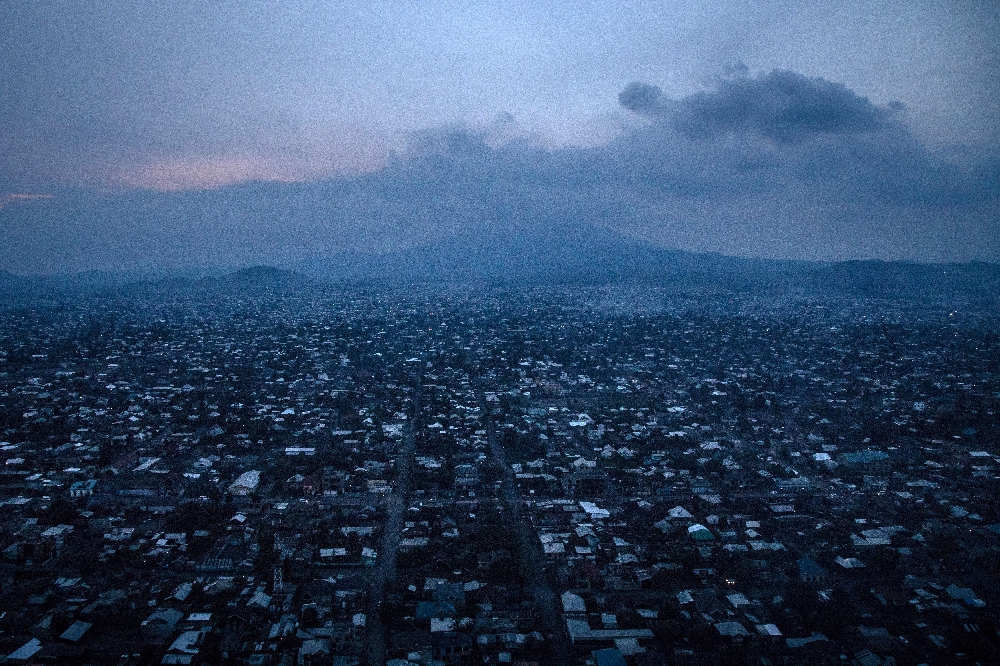Goma (DR Congo) (AFP) – Streets in the eastern DR Congo city of Goma returned to life on Tuesday, five days after residents fled following warnings that the nearby Nyiragongo volcano could erupt again.
In the city centre, the streets were clogged with traffic, including hefty four-wheel-drive vehicles driven by NGOs, while the number of pedestrians seemed close to normal and some shops had reopened, an AFP journalist said.
In front of the city’s main hospital, traffic deftly drove around large cracks that had emerged after the volcano first erupted last month.
Nyiragongo suddenly erupted on May 22, spewing out two rivers of lava before stopping the following day.
But powerful aftershocks ensued in the following days, prompting scientists to fear a possibly catastrophic eruption under the floor of Lake Kivu.
In their worst projection, a “limnic eruption” would heat carbon dioxide dissolved in the depths of the lake, sending the gas to the surface.
Forming a vast, invisible cloud, the gas could settle on the shoreline city and asphyxiate its inhabitants under this scenario.
In response, the provincial authorities last Thursday ordered the evacuation of most of the city’s districts. Around 400,000 people, out of a population of 600,000, were uprooted.
Many headed to the town of Sake, about 25 kilometres (15 miles) away to the west, or to the town of Gisenyi, just across the border in Rwanda, to the east.
Since then, the big tremors have virtually receded.
People began to trickle back on Monday, although the volcano’s monitors insist that it is not safe to return.
One of those who had left was Francoise Habimana, who fled to the Rwandan capital of Kigali with her children, where they stayed with a host family.
On Tuesday, she was among dozens of families queueing at the border crossing to return home.
Another was Beatrice Wakandwa.
“It was a bit hard to be on my own in Rwanda, even though the people were hospitable,” she said.
“I don’t have a choice. Whatever happens, I prefer to be back in Goma with my family.”
However, a crisis management cell set up by the authorities in North Kivu province, of which Goma is the capital, said on Tuesday that alert status “is still red,” which meant that people were not advised to return home.
“Today, the scientific data have recorded 71 earth tremors, the majority of which have not been felt by the population.
“A comparatively small fall in seismicity was recorded yesterday — however, the danger is full-time,” the emergency body said.
“We therefore recommend that people stay vigilant, listen to the news and strictly observe the measures set down by the provincial authorities.”
Source: New feed


